Tips for Successful Surfboard Making … Gluing the Frame


The process of building your own hollow wooden surfboards starts with assembling the frame - importantly a ‘dry run’ assembly. Read more about this stage in our previous blog post here.
Once a dry run of the frame assembly has been executed, it is time to bring in the glue and establish the frame... for real! All the parts are disassembled (pegs off, tape off) and laid out ready for the first glue up.
Remembering that the small timber tabs have already been glued to the rail ends, to assist with holding in the nose and tail blocks. As well as the ribs have already been glued to the internal rails.
The glue that we use in this glue up stage are; Surfset Flex and Techniglue CA R60 Epoxy. We have used these glues for years and are always happy with the results. These are two part glues - so always mix these together well to ensure they go off properly. You don't want your board falling apart!
First we begin gluing the rails together, 3 on each side - make sure the outer rail doesn’t get glue applied here. The rails are secured with pegs acting as clamps along the length of the board.
Using the Techniglue Epoxy, the nose and tail blocks are taped in place. Here we make sure they are lined up with the rails, referencing the rib marking we have drawn on the inside of the block.
The Techniglue is also used to gusset along the rails, where the ribs meet to provide extra strength. The finishing touch to the glued-up frame is fixing the plywood centerline on top of the board, to prevent any twist from occurring when the glue is going off.
The frame is placed on frame stands so it is lifted off the bench and pegs can be placed along the underside.
The frame needs to be left for a day to fully set and the shaping can begin. Once set, you have a very study internal frame that will be the foundation of a stunning board to come.
Stay tuned for our next instalment of ‘Tips for Successful Surfboard Making’… next, we’re shaping the frame!



